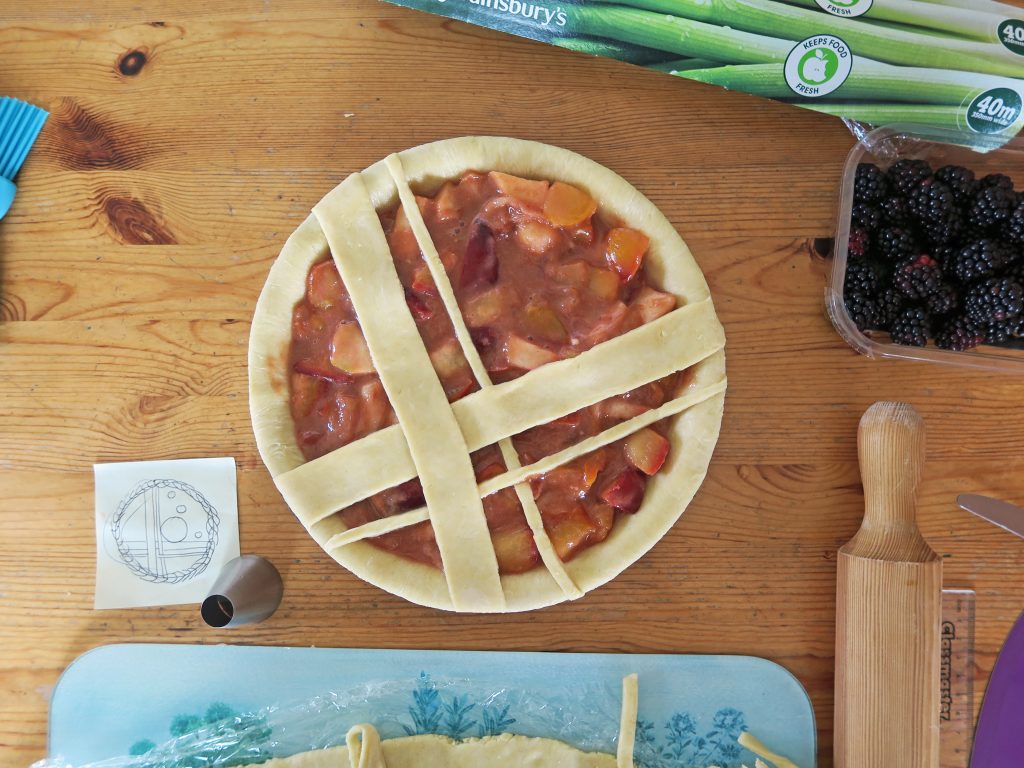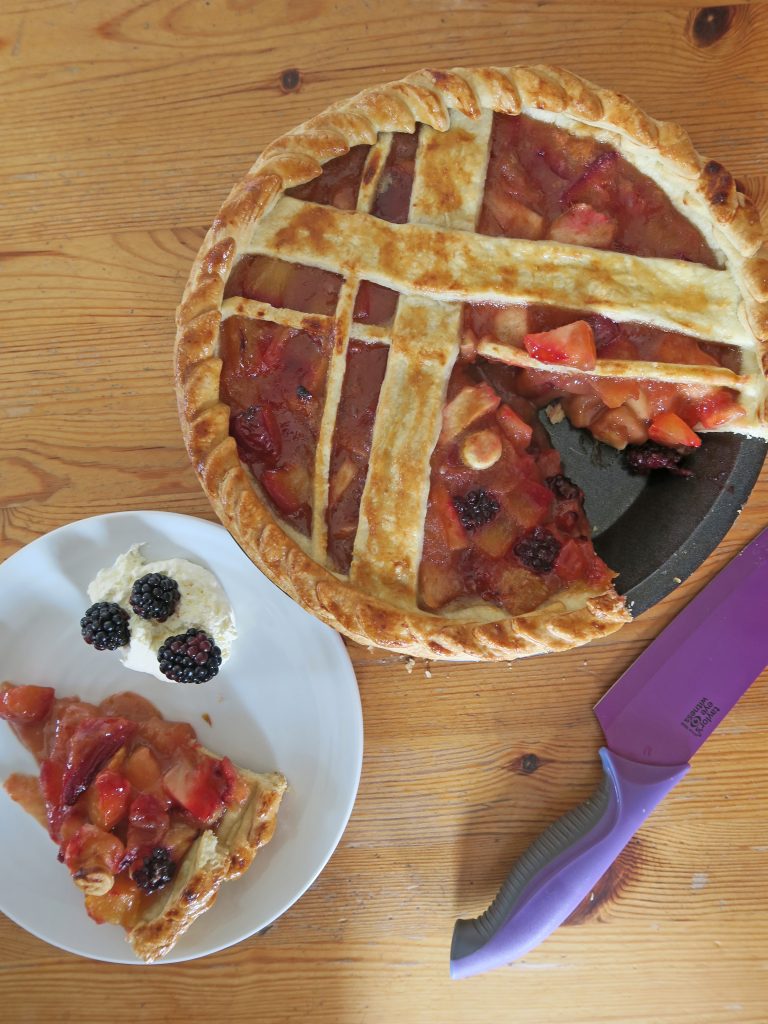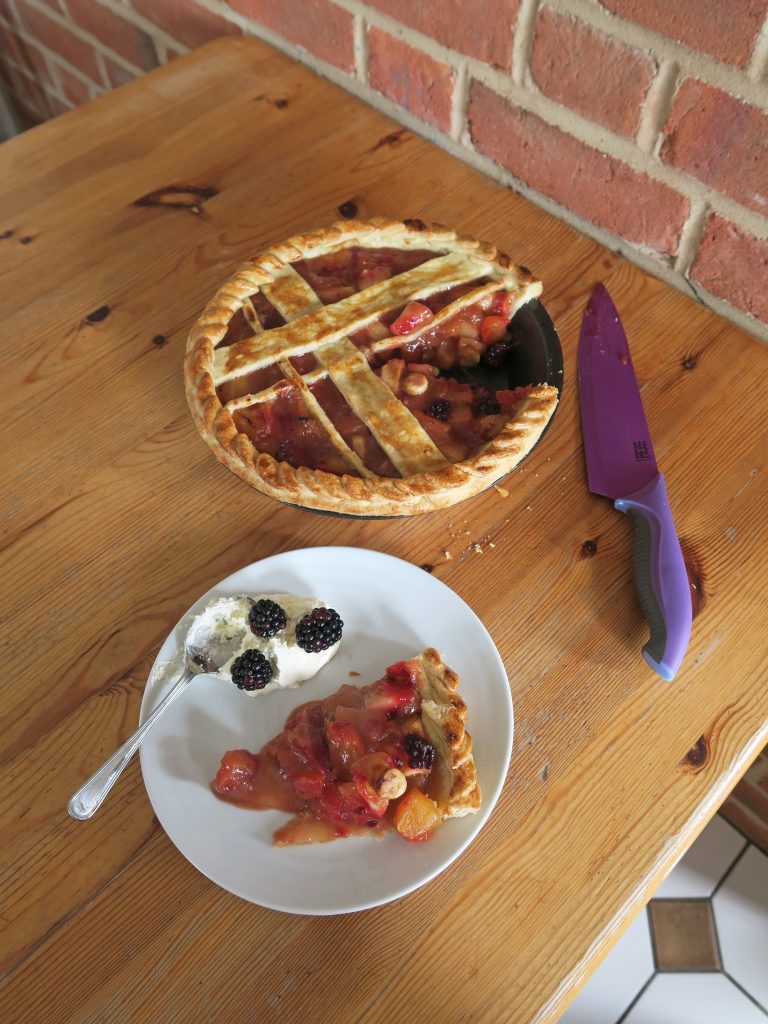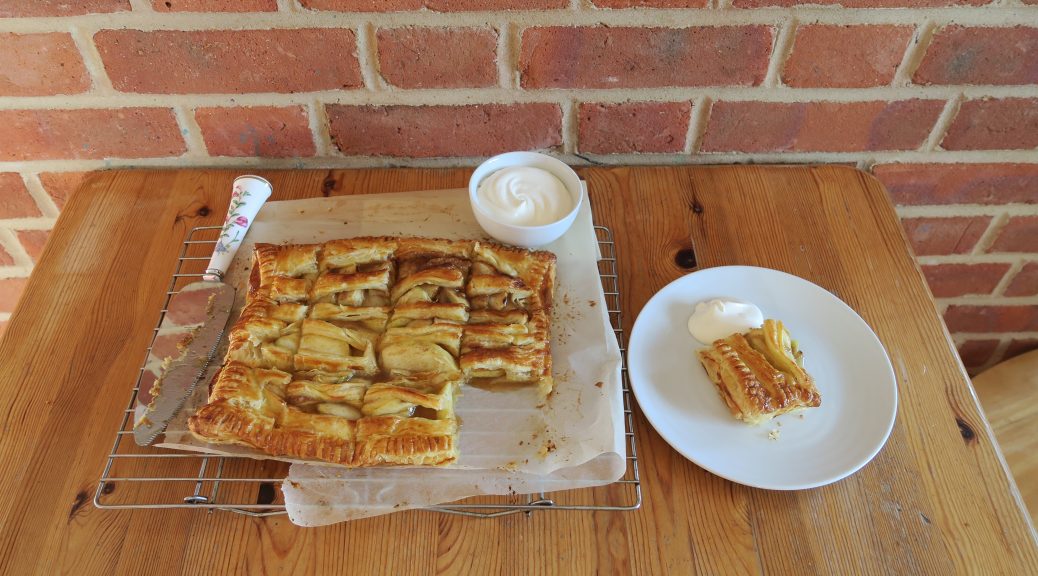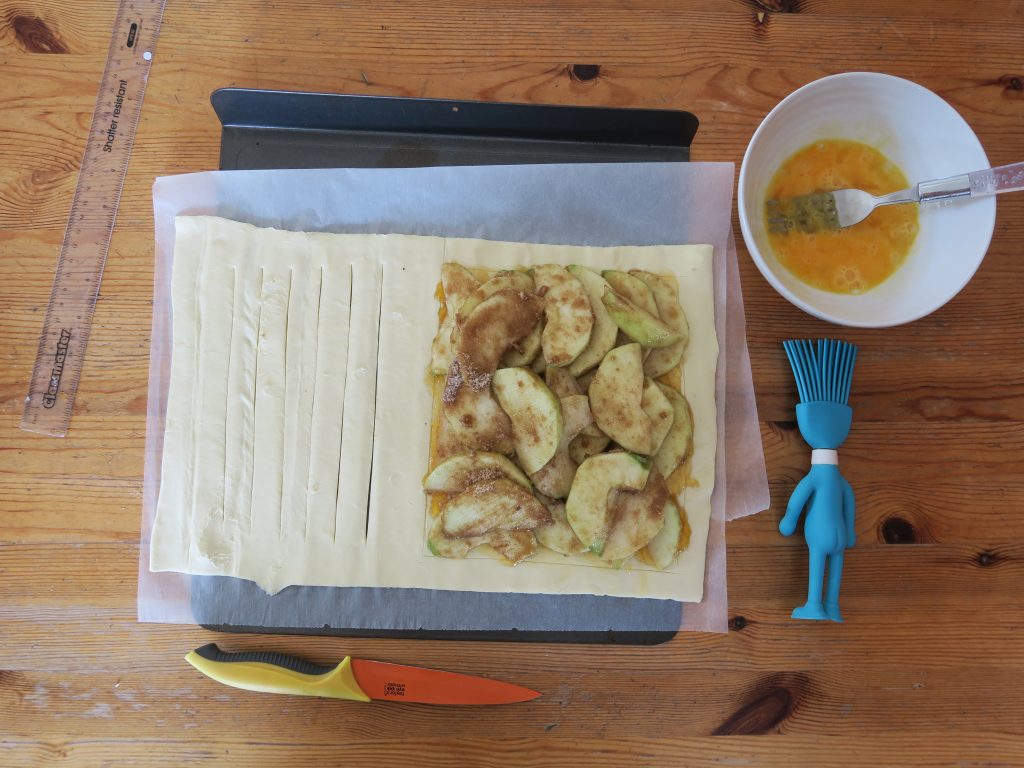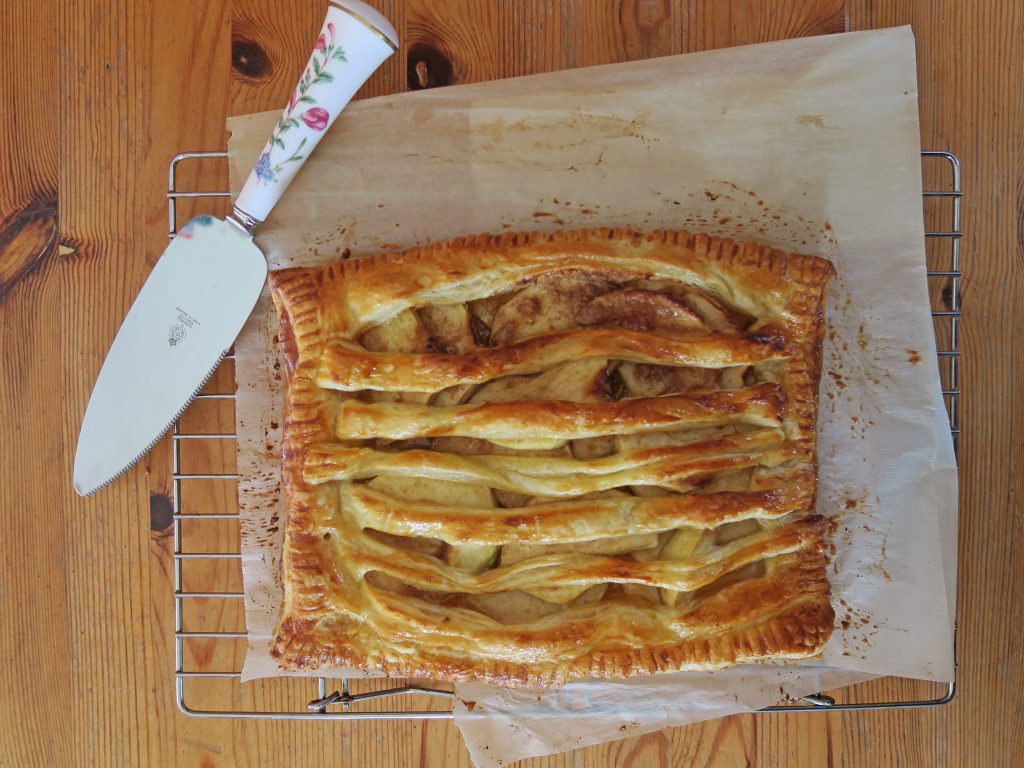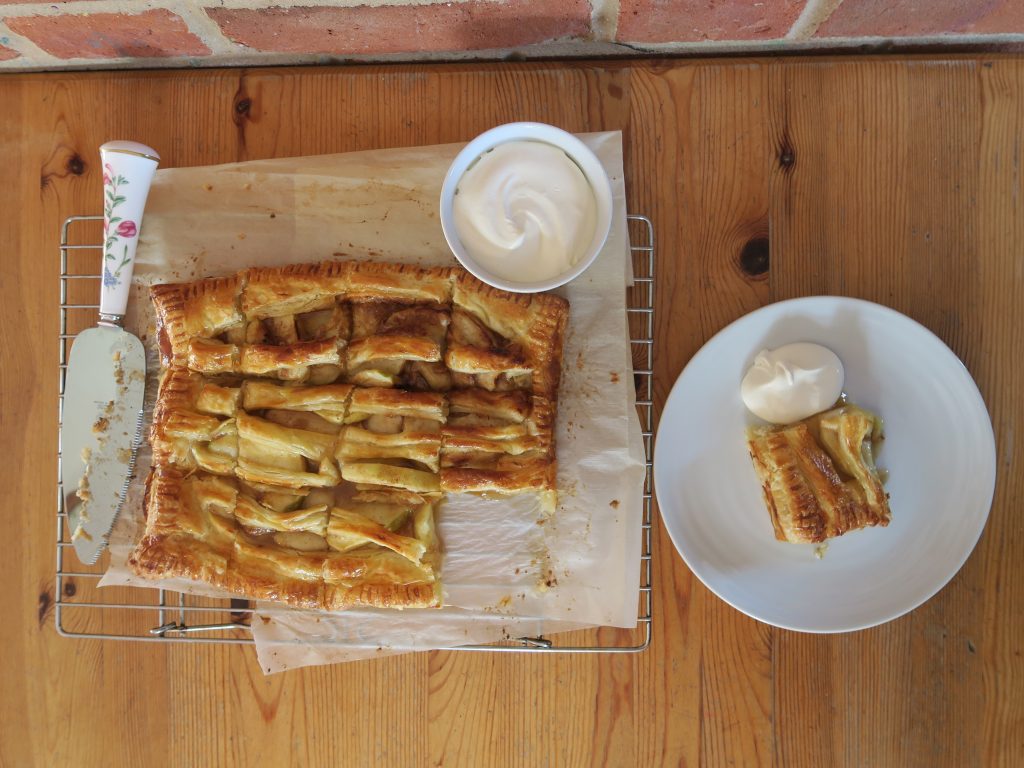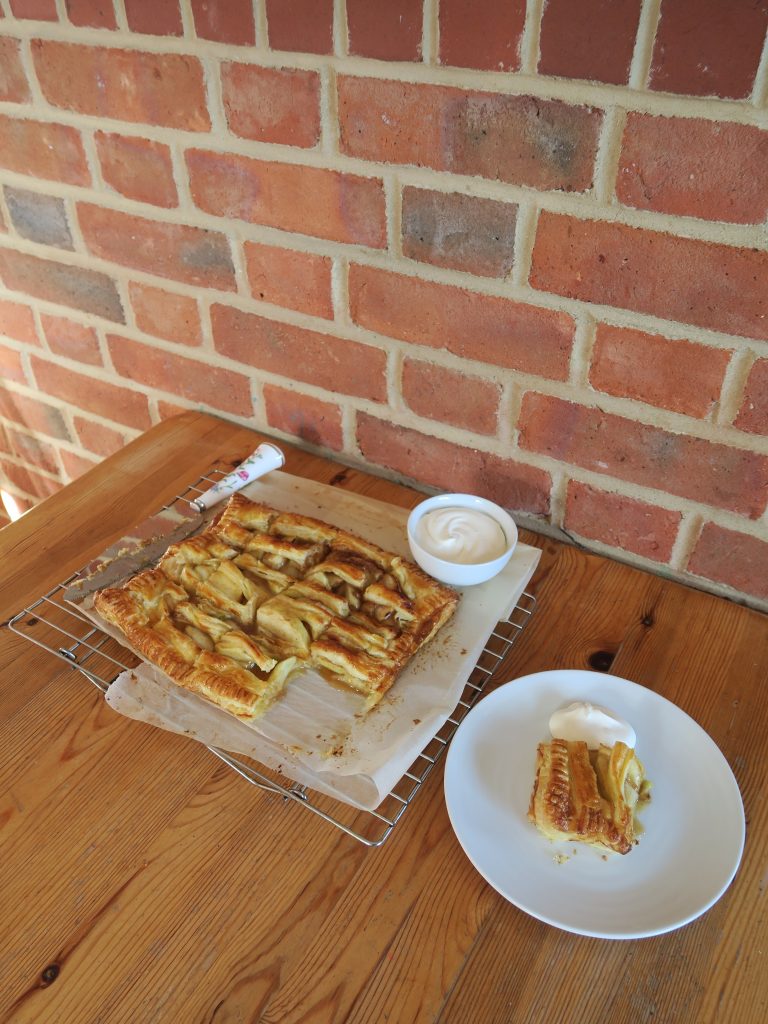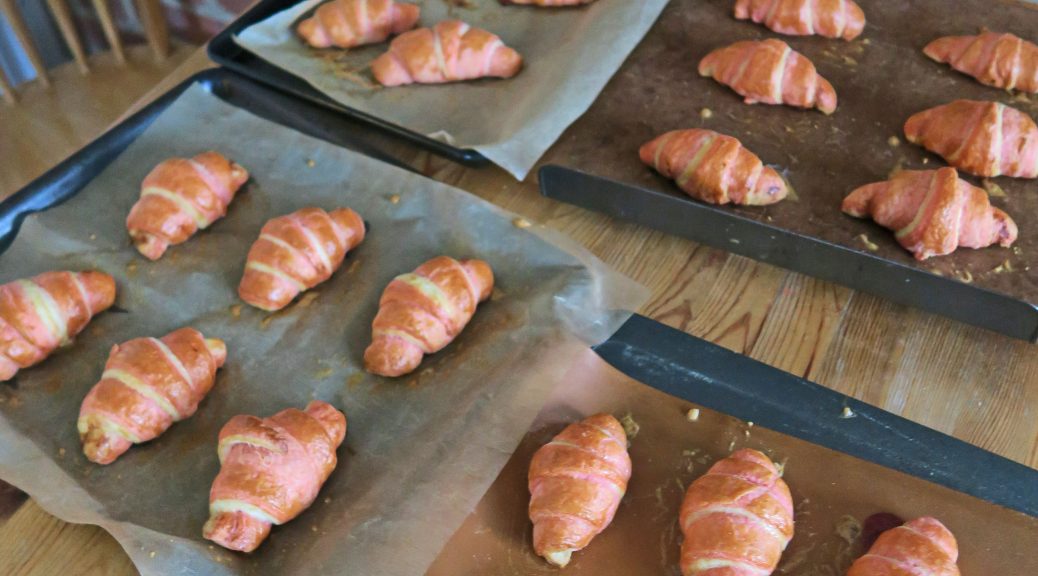
Strawberry Croissants
With veganuary over now I’m in that weird period where I’m still adapting to the fact that I can eat pretty much anything I want! I’m also super looking forward to going back to unrestricted baking and being able to get experimental again. Even though I don’t have the equipment at Uni to be able to make everything I’d like to, or even the time for that matter, making super complex, tasty treats is so so satisfying and a great way to de-stress!
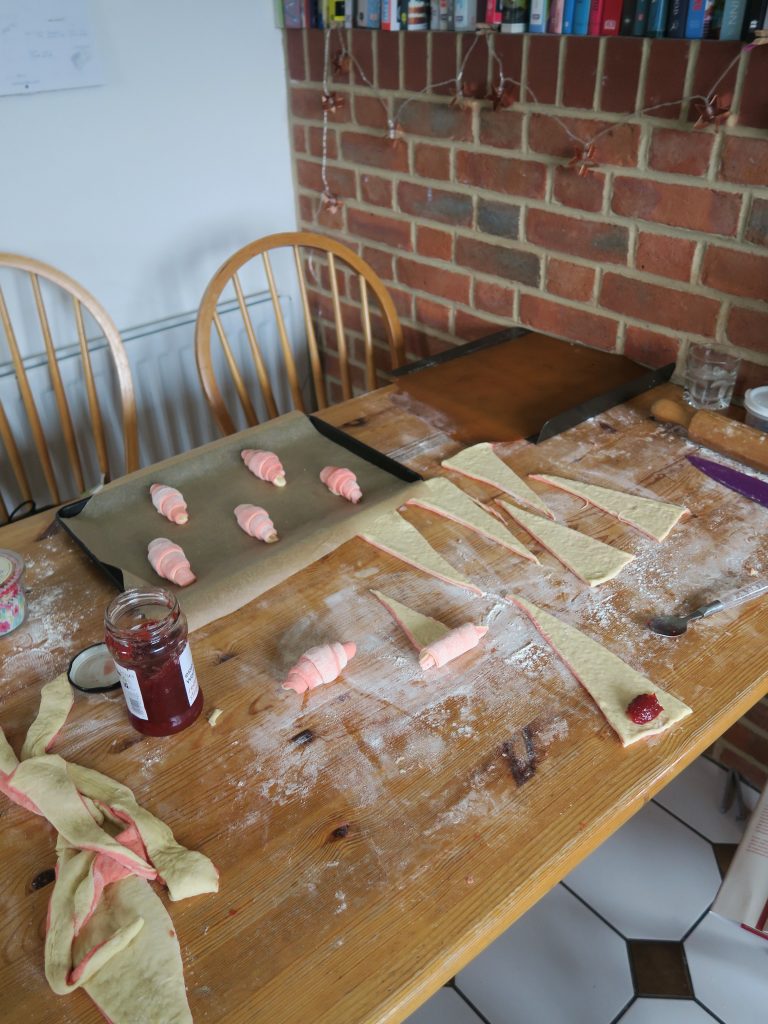
I made these over Christmas break when the only two things I was focusing on was cooking and catching up on my art course. As holidays are the only time I have access to a sizeable kitchen I go a little crazy whenever I’m home and just cook non-stop, finally able to make all the things I’ve wanted to make over the past term! Recently in the food-sphere coloured croissants have started to become everyday (we even have pinstriped ones like these in college for breakfast now!) and as I’m a complete nut for food crazes I knew this was something I’d have to try myself. It does make the dough a little longer to put together as you have to work with two doughs instead of one, but as it’s a flipping long process anyway it’s worth it just to get the extra jazz hands moment when they’re made.
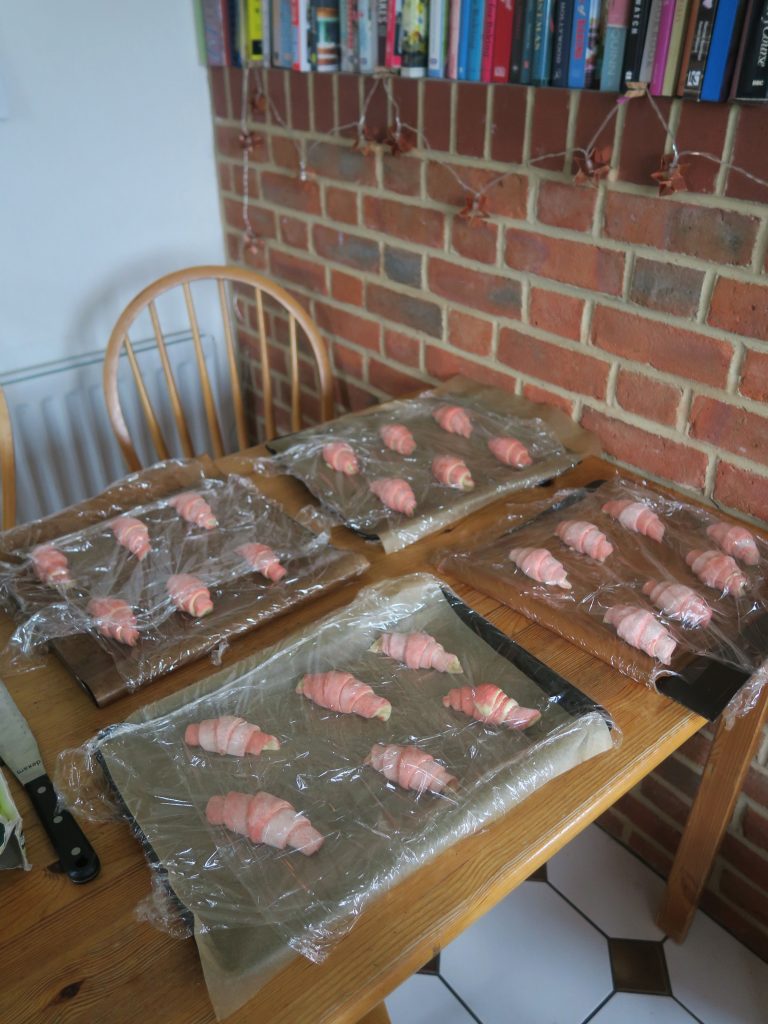
To get the pink colour in these I used some amazing gel food colourings that I got for Christmas. You can of course get normal ones from supermarkets, but I’d really recommend getting some of these if you want to get good results. They’re way more concentrated than the cheap stuff, meaning you can add less and still get a bright colour without affecting the consistency of your mixture! You can buy them in specialist food shops or on Amazon as I did, and you can get so many colours for a fairly low price (also as you’re only using a little bit at a time they’ll last you a long time!) You can even use the colours to paint on the outside of the dough once it’s rolled up so you could make rainbow croissants (I’m thinking Pride week) or paint them with specific colours (for a match or party etc)!
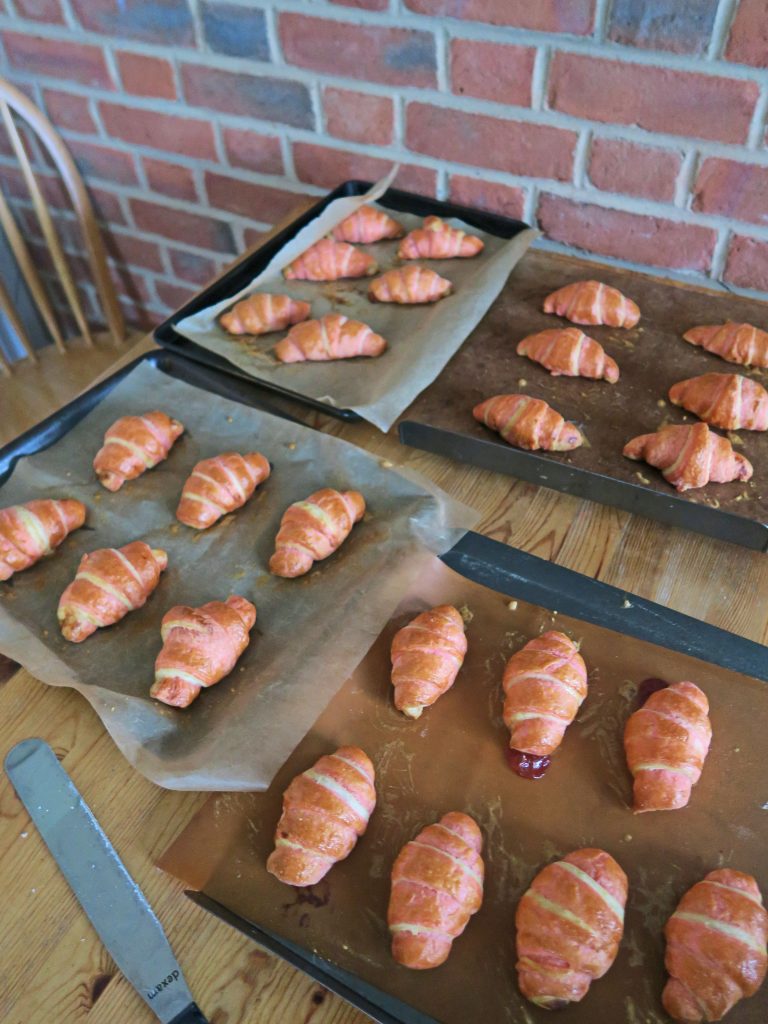
Recipe
Makes 25
Time: 3 hours plus chilling and baking time
Ingredients
For the white dough
- 250g Strong white bread flour
- 100g Plain flour
- 30g Unsalted butter
- 25g Caster sugar
- 5g Salt
- 8g Fast-action dried yeast
- 1/2 Egg
- 55ml Milk
- 100ml Cold water
- 200g Unsalted block butter
For the red/pink dough
- 250g Strong white bread flour
- 100g Plain flour
- 30g Unsalted butter
- 25g Caster sugar
- 5g Salt
- 8g Fast-action dried yeast
- 1/2 Egg
- 55ml Milk
- 100ml Cold water
- A few drops of red gel food colouring
- 200g Unsalted block butter
To Decorate/Fill
- 75g Strawberry jam
- 1 Egg, beaten
Method
- Begin by making the white dough. Put the flours and butter into a large bowl. Rub the butter into the flours until crumbly.
- Mix in the sugar, salt and yeast and then add the egg, milk and water and stir together until a smooth dough forms.
- Turn the dough out onto a worktop and knead for about 10 minutes until smooth and stretchy. Wrap the dough really loosely in cling film and then leave to rise in the fridge for 24 hours.
- Do the same for the red dough, this time adding the food colouring in at the end. Then rest it the same as the white dough.
- Now you’re ready to laminate the dough. Take one of the blocks of butter out of the fridge and place it between two sheets of cling film. Bash it into a 12cm square and then place it back into the fridge to firm up. Do the same for the other block.
- Take one of the doughs out of the fridge. Roll it into a 25cm square that’s 1 cm thick. Place the butter in the middle so it’s corners hit the centre of the sides of the dough square (a diamond in a square).
- Fold the dough up around the butter like an envelope and then roll the dough out into a 22 x 40cm rectangle.
- Fold over one third of the dough, and then the top third down to cover it. Wrap the dough in cling film and then chill in the fridge for 30 minutes. Do the same with the butter and the folding for the other dough.
- Once the dough has chilled take it out of the fridge and roll it out again to make a rectangle again. Repeat the folding and chilling process and then repeat this twice more. Do the same for the other dough.
- Wrap the two doughs very loosely in clingfilm (so they have room to rise) and then leave in the fridge overnight.
- Now shape the dough. On a lightly floured surface roll one of the doughs out to a 31 x 41 cm rectangle. The dough will resist being shaped but just keep going and you’ll get there. Put the dough sheet to one side and then repeat with the other coloured dough.
- Place the red dough on a lightly floured work top and brush it lightly with some water. Then put the white dough on top and roll the sheet out into a rectangle 31 x 81 cm. Trim the rectangle down to make a neat 30 x 80 cm rectangle.
- Cut the rectangle in two to make 2 rectangles 15 x 40 cm. Take one of the rectangles and cut a little notch every 10cm along one edge. Then measure the other edge: cut one notch at the first 5cm, and then cut a little notch every 10cm.
- Take a knife or a pizza cutter and cut diagonally between the notches to make a series of triangles 10cm at the base and 20cm high. Repeat with the other rectangle of dough.
- Take one triangle and stretch it a little to make the dough taught. Then put a little blob of jam at the wide base before rolling up the croissant from the wide base to the point. Place the croissant onto a lined baking tray with the join underneath. Repeat until you’ve used all the dough to make some croissants.
- Cover loosely in clingfilm and then leave for 2 hours to rise and double in size.
- Pre-heat the oven to 180˚C. Take the beaten egg for the decoration and lightly brush it over the pastries. Then bake the croissants in the oven for 15-20 minutes until golden brown and risen. Leave to cool a little before eating!

Thanks for reading!
Emma x
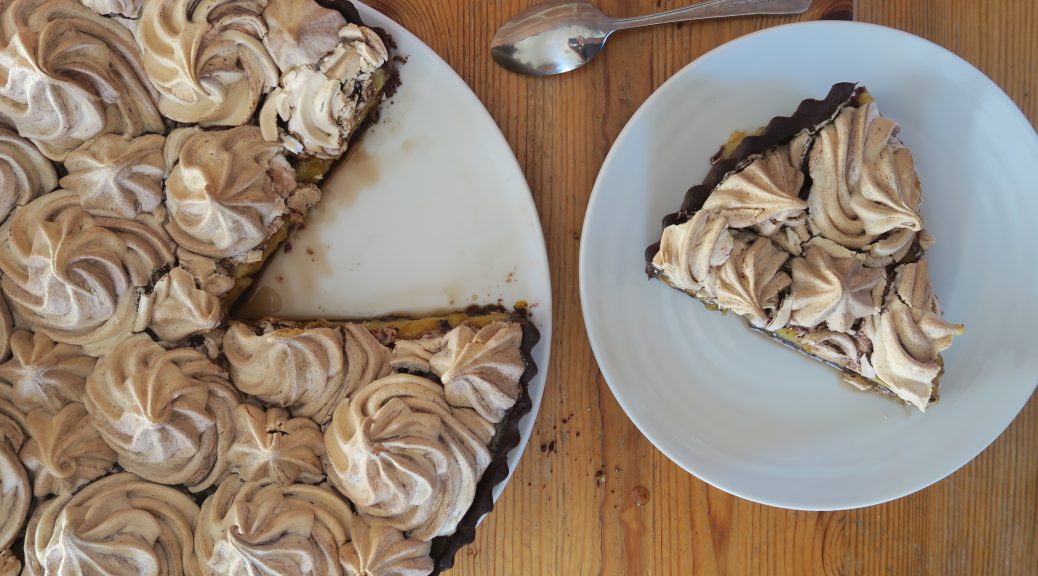
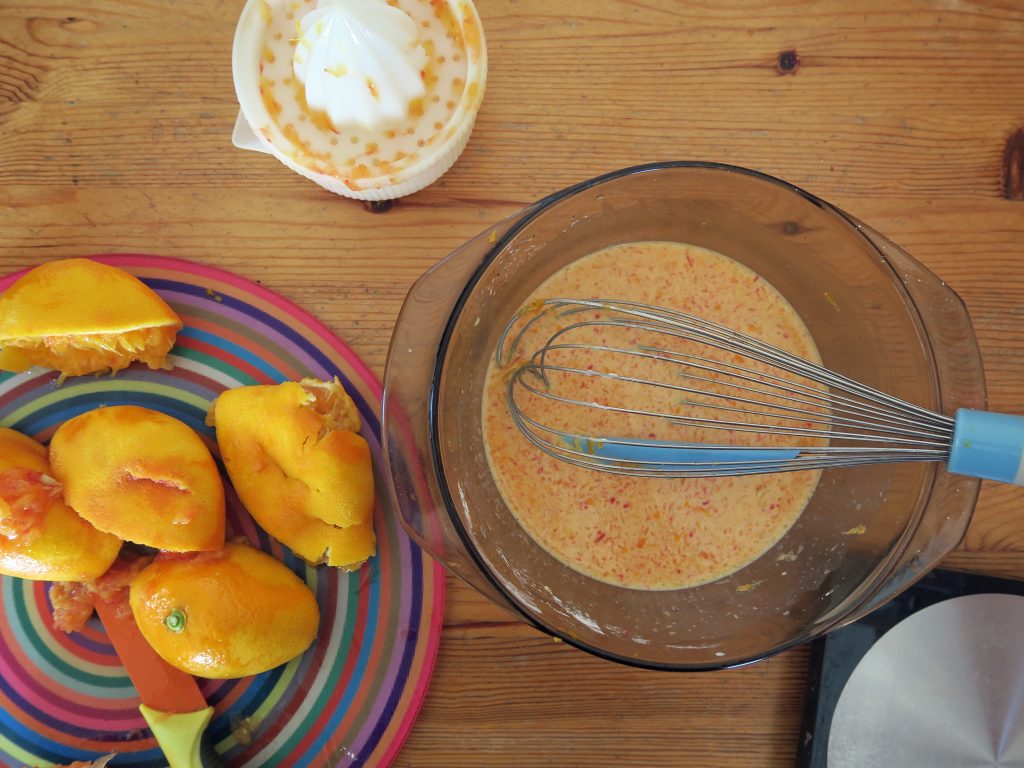
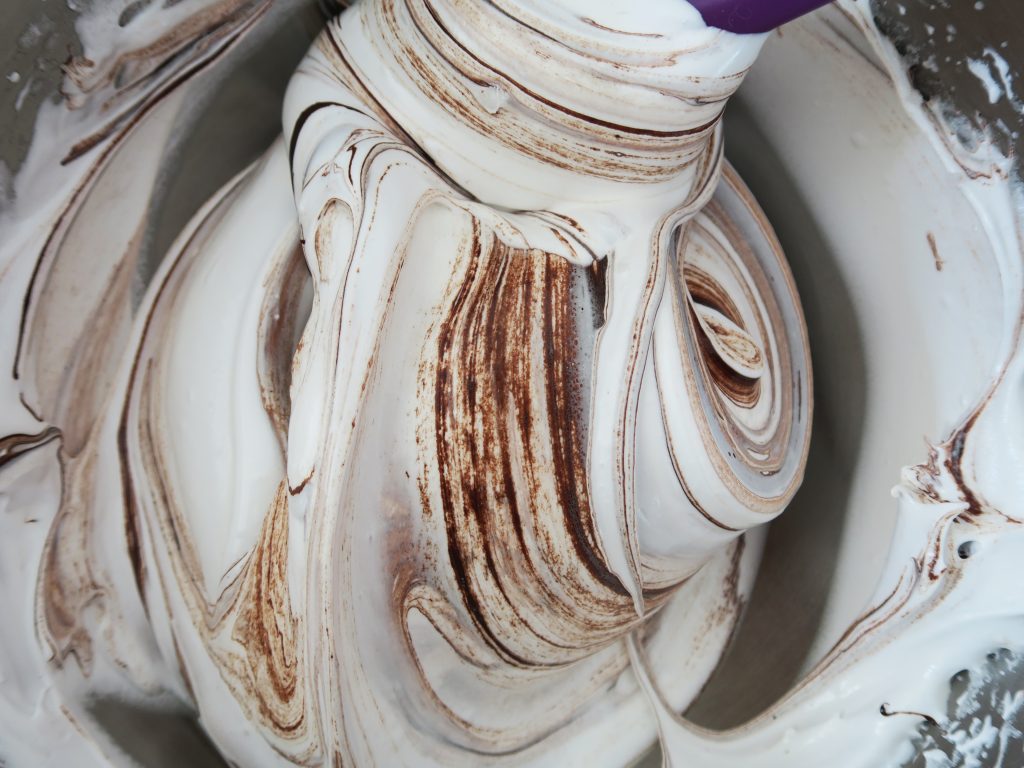
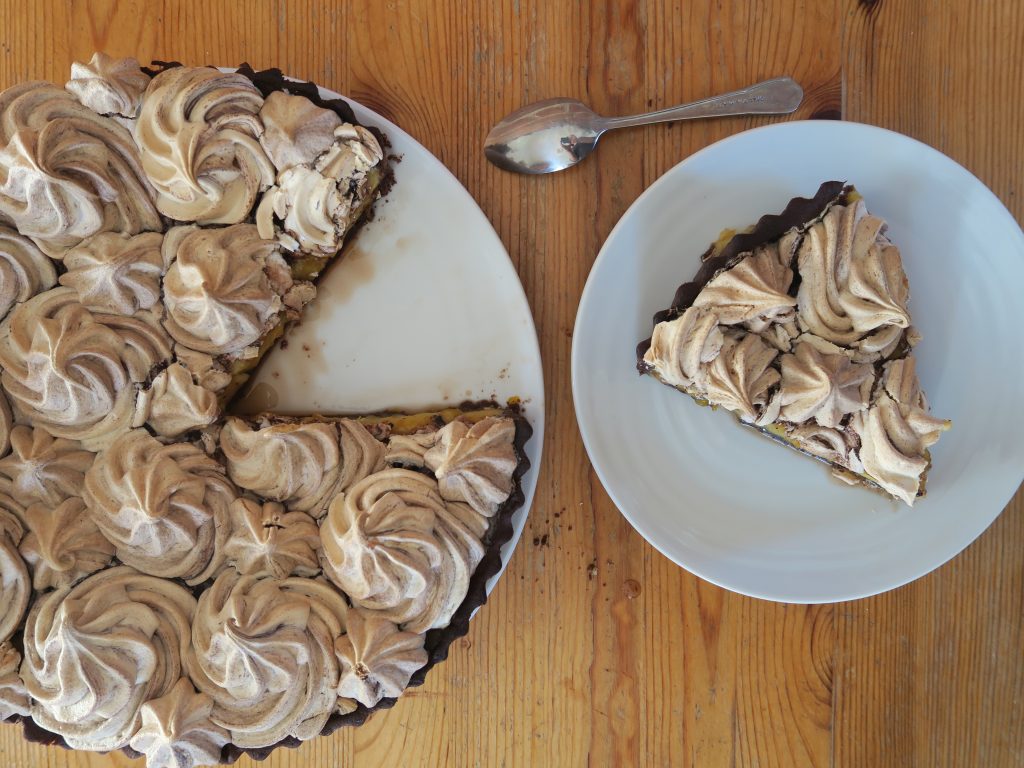
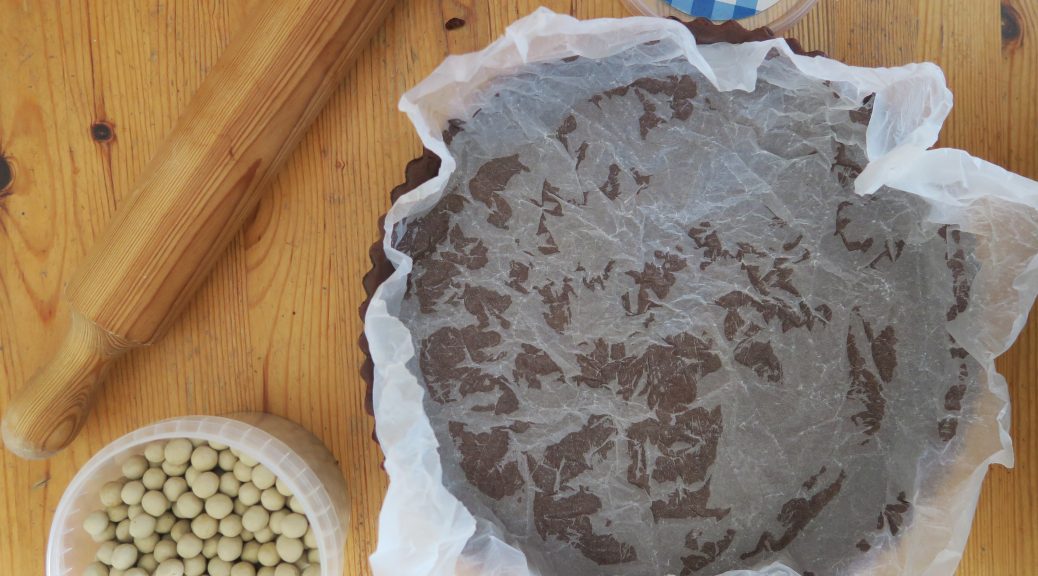
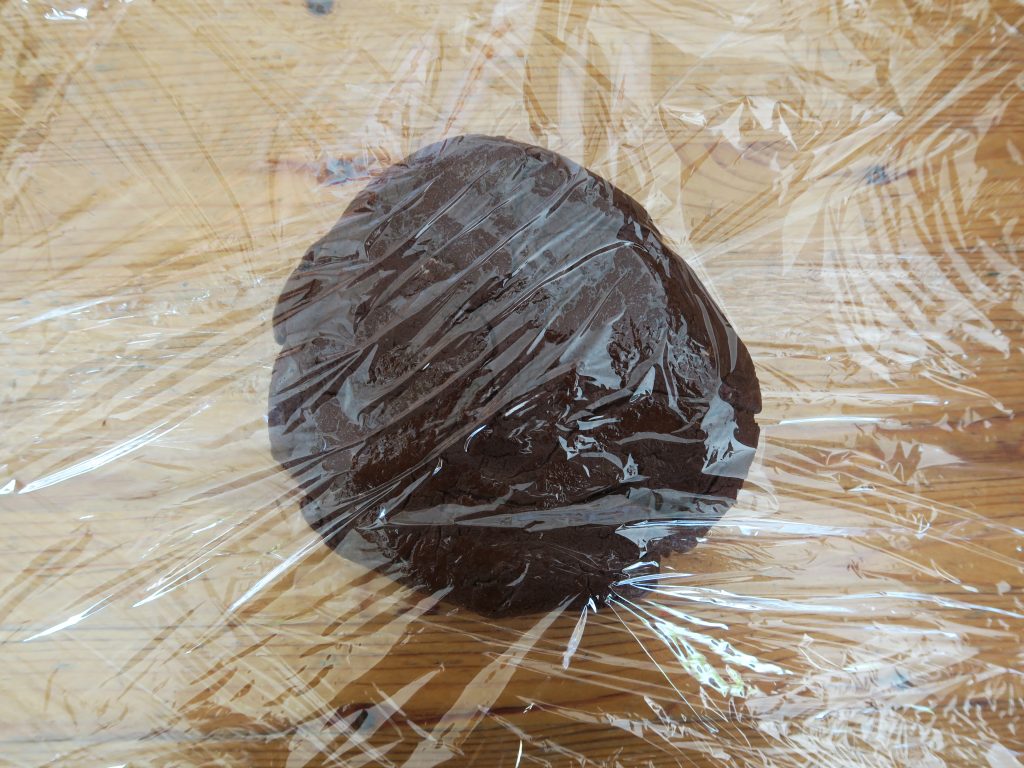

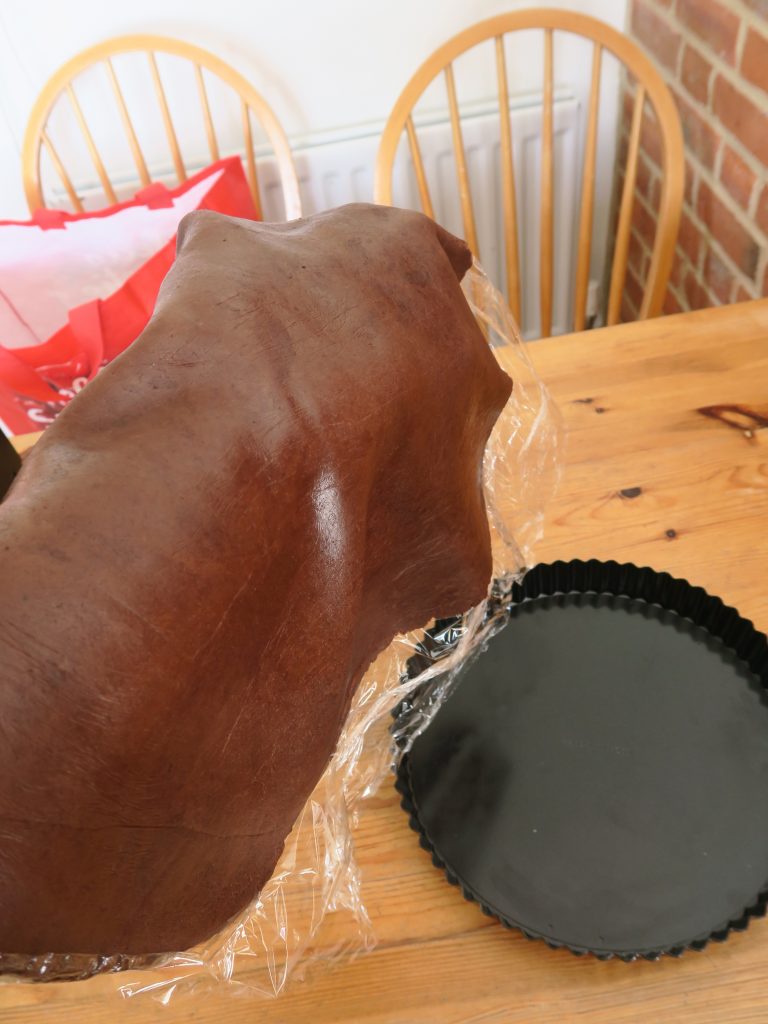
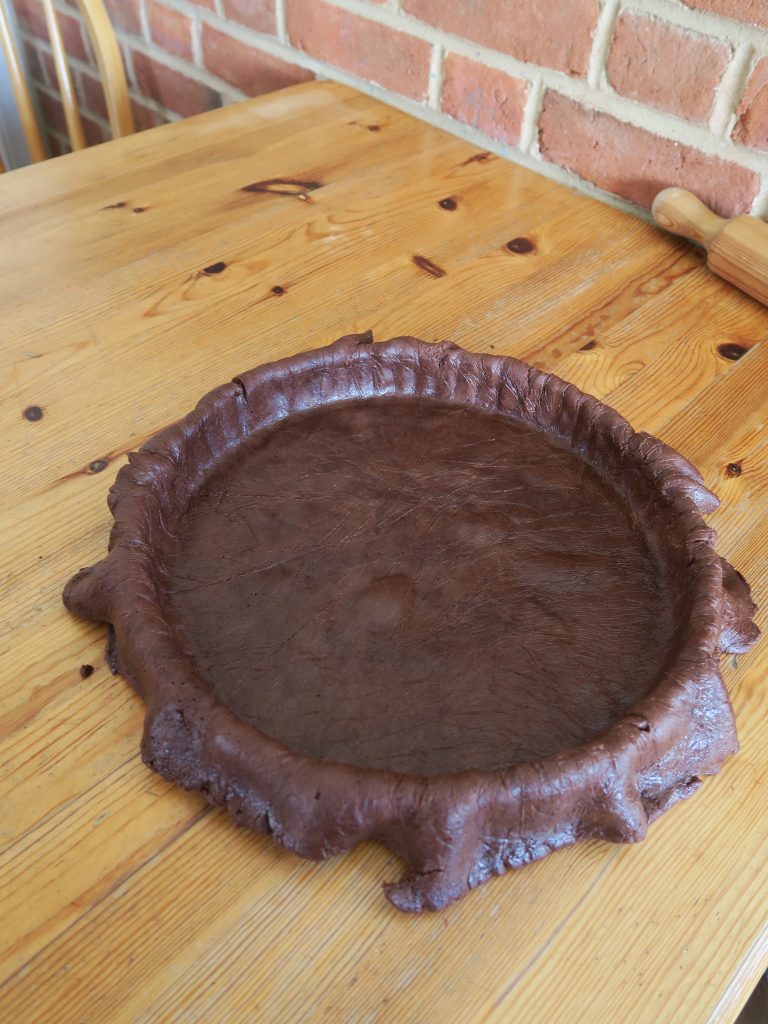
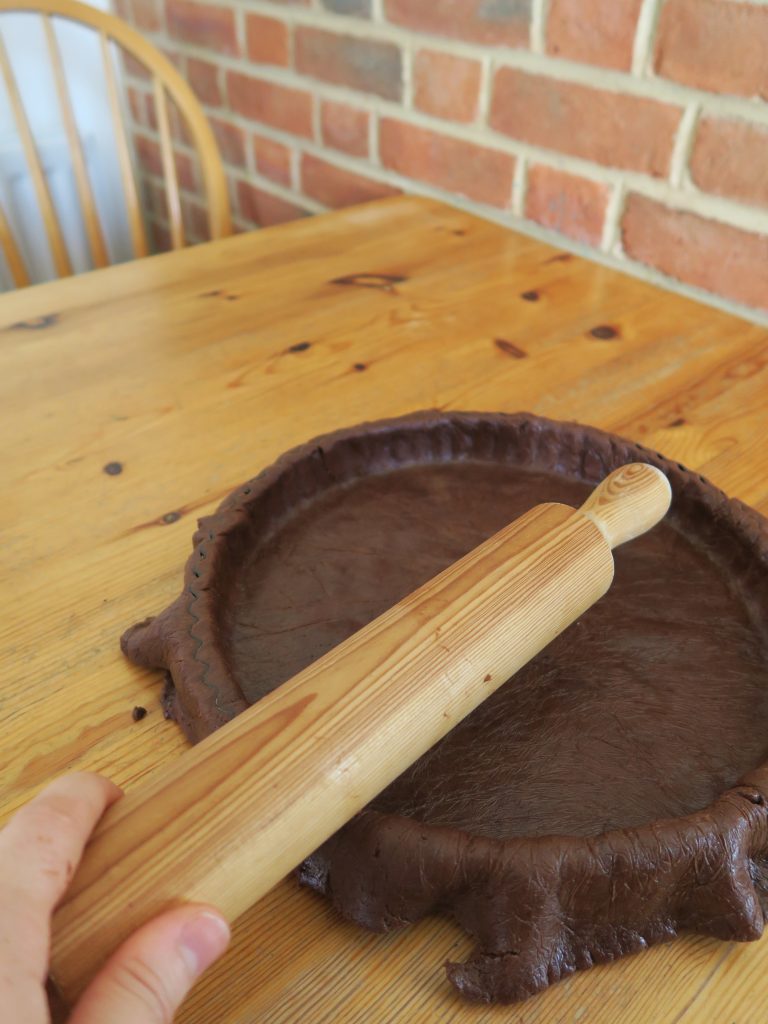
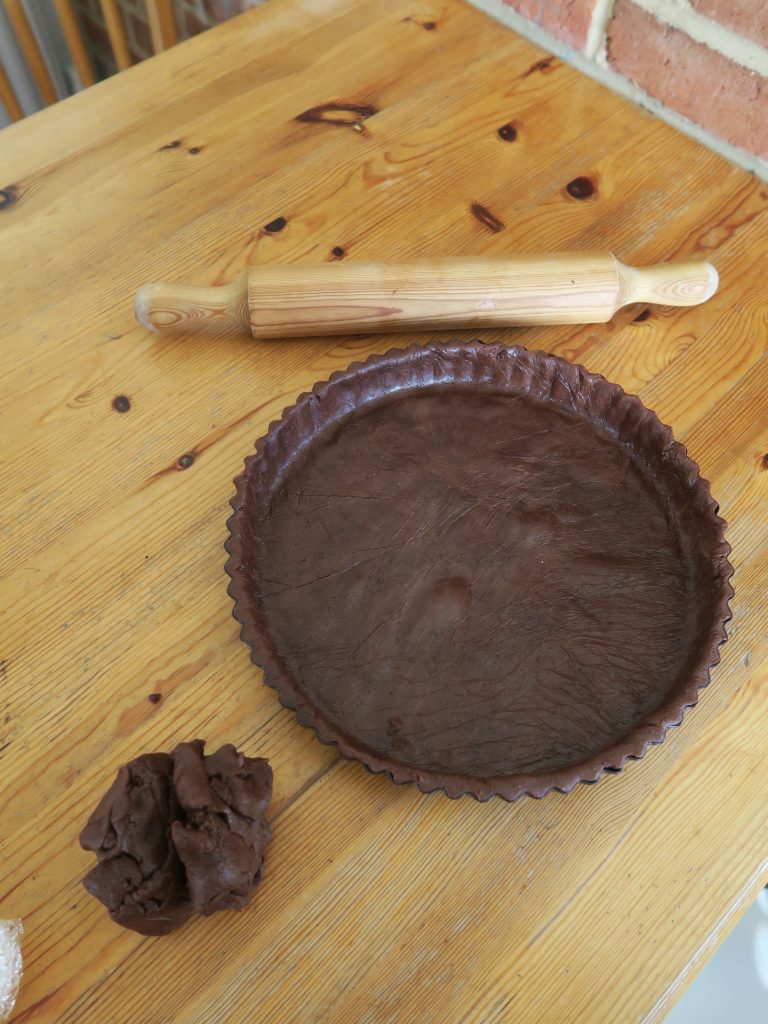
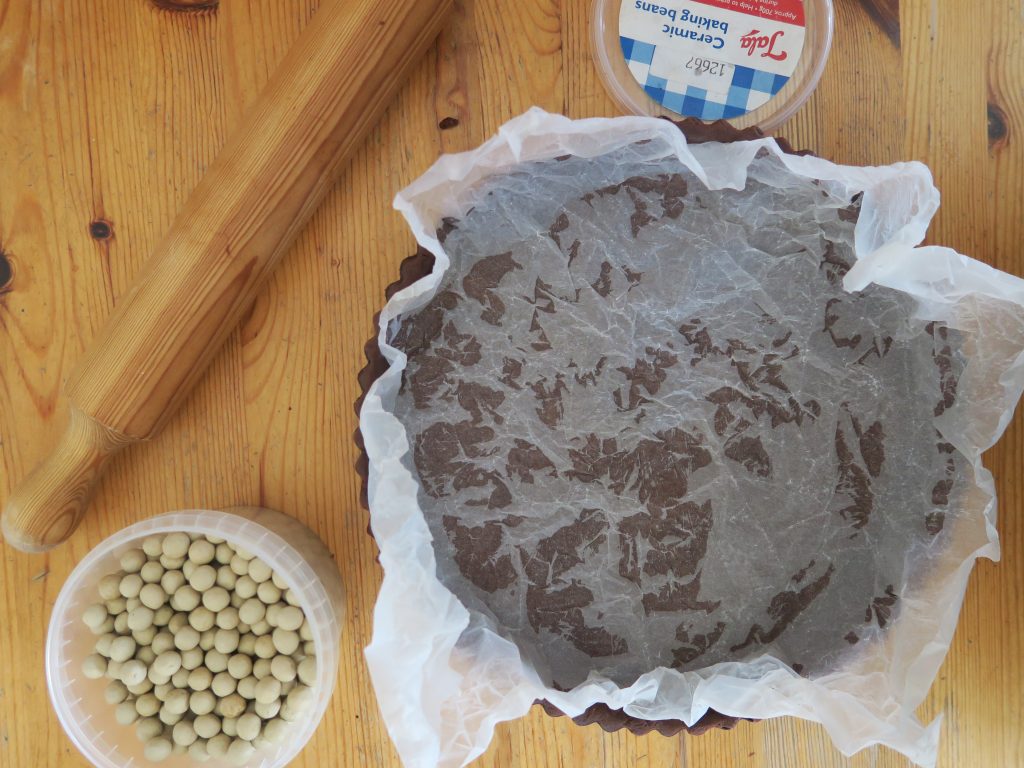
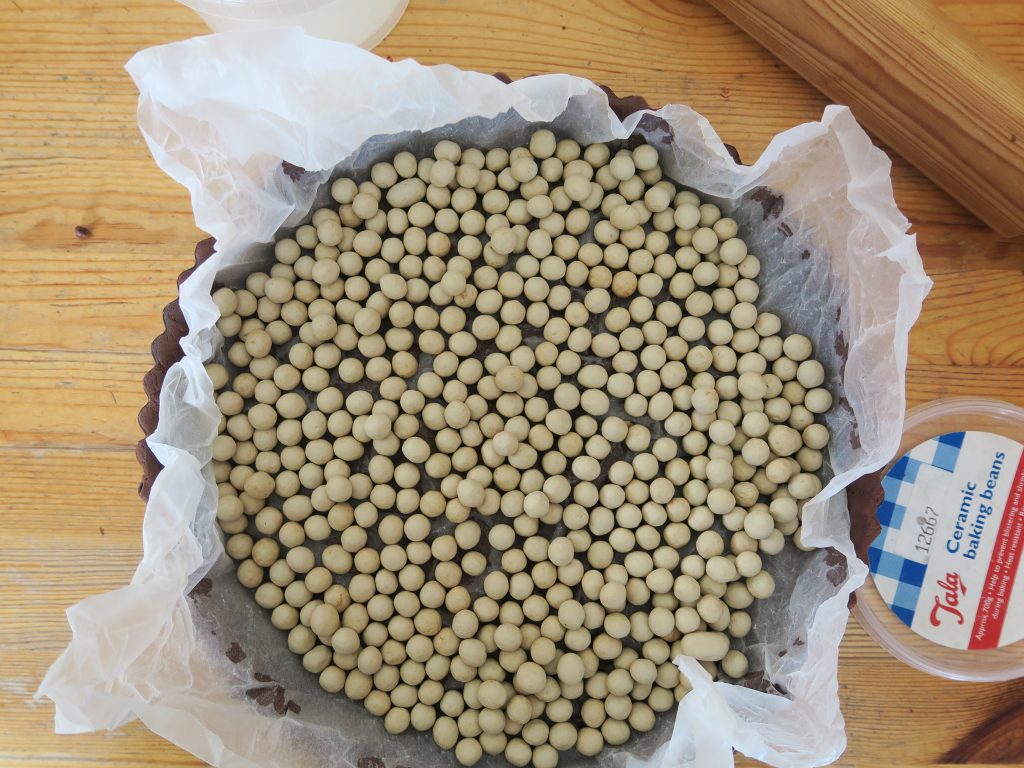
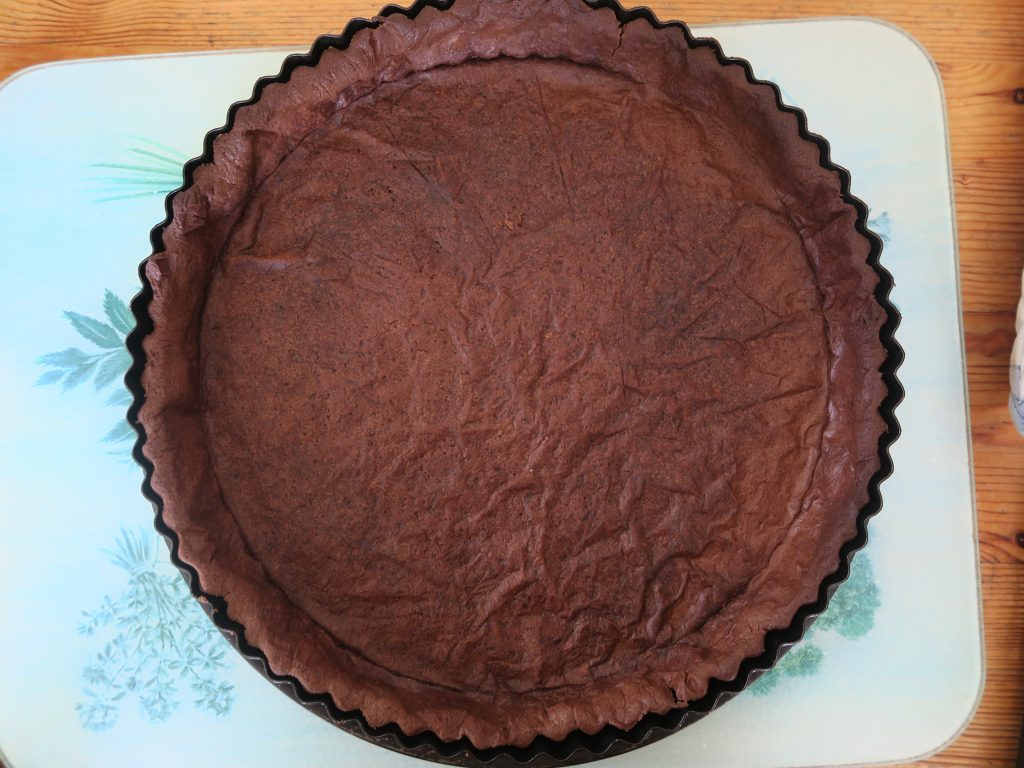
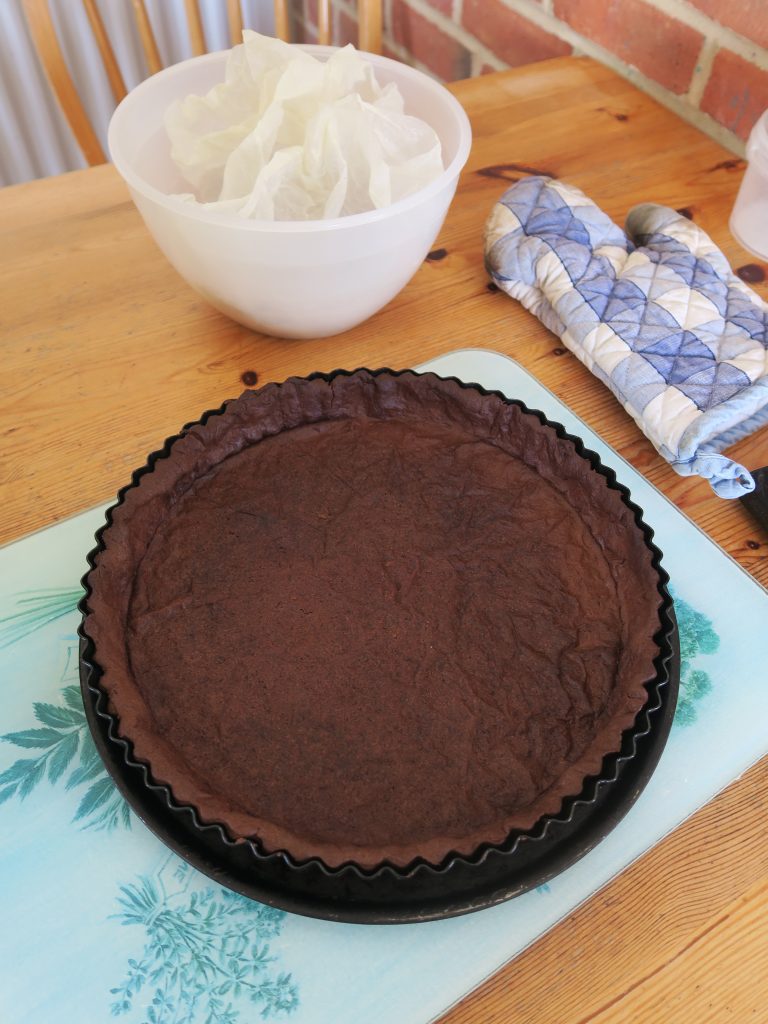
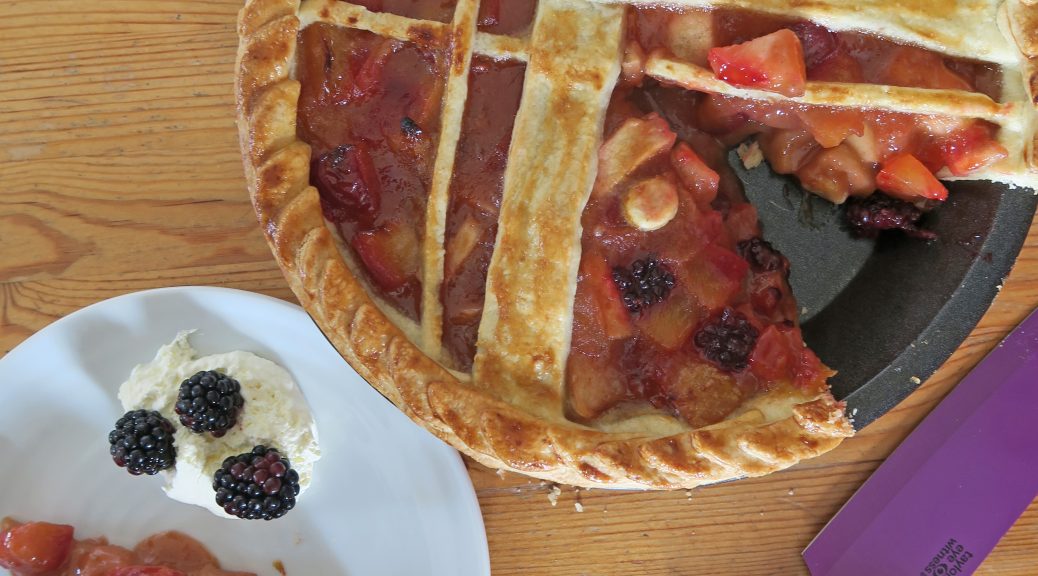
 Then, I can’t quite remember how, Simon began talking about the Devil spitting on blackberries and impending doom awaiting those who’d eat blackberries after 11th October, as you do. Being me I missed half the story through drifting in and out of the conversation, so when I got home I looked it up and to find out what the blazes he was on about. Apparently when Lucifer fell from heaven, on the 11th October (who knew!), he fell on a thorny blackberry bush. As a result he now spits on all the blackberries on 11th October and so anyone who eats them after this time is doomed . What a cheery story right? You learn something new every day.
Then, I can’t quite remember how, Simon began talking about the Devil spitting on blackberries and impending doom awaiting those who’d eat blackberries after 11th October, as you do. Being me I missed half the story through drifting in and out of the conversation, so when I got home I looked it up and to find out what the blazes he was on about. Apparently when Lucifer fell from heaven, on the 11th October (who knew!), he fell on a thorny blackberry bush. As a result he now spits on all the blackberries on 11th October and so anyone who eats them after this time is doomed . What a cheery story right? You learn something new every day.